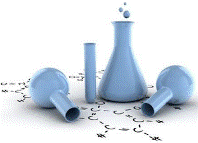Chemical and Biomolecular Engineering, Department of
Date of this Version
2020
Document Type
Article
Citation
Computational and Structural Biotechnology Journal 18 (2020) 2556–2567
https://doi.org/10.1016/j.csbj.2020.09.022
Abstract
Plants respond to abiotic stressors through a suite of strategies including differential regulation of stress- responsive genes. Hence, characterizing the influences of the relevant global regulators or on stress- related transcription factors is critical to understand plant stress response. Rice seed development is highly sensitive to elevated temperatures. To elucidate the extent and directional hierarchy of gene reg- ulation in rice seeds under heat stress, we developed and implemented a robust multi-level optimization- based algorithm called Minimal Regulatory Network identifier (MiReN). MiReN could predict the minimal regulatory relationship between a gene and its potential regulators from our temporal transcriptomic dataset. MiReN predictions for global regulators including stress-responsive gene Slender Rice 1 (SLR1) and disease resistance gene XA21 were validated with published literature. It also predicted novel regu- latory influences of other major regulators such as Kinesin-like proteins KIN12C and STD1, and WD repeat-containing protein WD40. Out of the 228 stress-responsive transcription factors identified, we predicted de novo regulatory influences on three major groups (MADS-box M-type, MYB, and bZIP) and investigated their physiological impacts during stress. Overall, MiReN results can facilitate new experi- mental studies to enhance our understanding of global regulatory mechanisms triggered during heat stress, which can potentially accelerate the development of stress-tolerant cultivars.



Comments
2020 The Author(s).